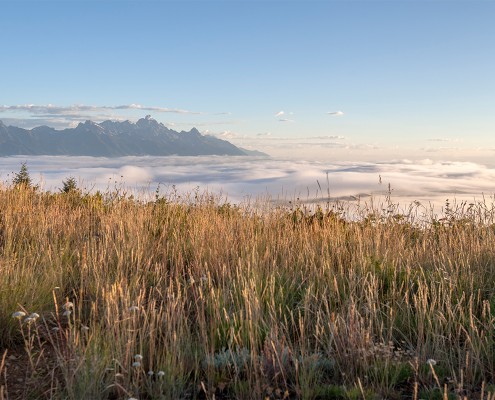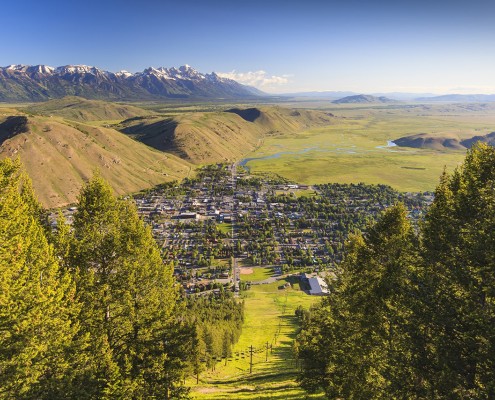Phoenix Rising: The Town Hill
Four years ago, The New York Times chronicled the uncertain future of Snow King Resort under the ominous headline, “In the Shadow of Grand Resorts, a Town Hill Struggles.”
The article told of the Town Hill’s history as the first ski area in Wyoming and one of the oldest in the nation. “The ski slope that rises up the mountain just off downtown, called Snow King, dates from the 1930s, when this corner of the West all but folded up in winter, isolated and dark, and local people needed something to do,” wrote Times reporter Kirk Johnson. Snow King has long been loved by locals for the runs its close proximity to downtown allows them to sneak in before work, during lunch, and after hours.
“‘It was never meant to make money,’ said Bill Ashley, 89, [in the Times article] who owned and ran the Snow King ski school for many years and met his wife, Mary, at the top of the mountain in the early 1950s. “‘It was meant to be for the town.’”
“For the town” remains the motto of the resort, even now under new ownership. When the Timesarticle was published, the long-time owners of Snow King had quietly put the resort up for sale because the math just didn’t add up: With less than 400 acres of steep, skiable terrain (miniscule by modern resort standards), Snow King operated at a $800,000 winter deficit, a loss partially recovered by steady year-round convention and hotel business and popular summer activities like the alpine slide. After several years on the market and much civic discussion, Jackson resident Max Chapman took over as Snow King President last November. His goal: To create a ski hill that serves locals but also holds its own against other first-class resorts in the region and beyond.
Snow King’s phoenix rising can be felt on any given summer day as the base buzzes with activity. From the weekly Wednesday People’s Market to the periodic free concert series JacksonHoleLive!, from the intrepid hikers crisscrossing its steep slopes to the revolving door of athletic competitions, Snow King plays host to a panoply of activities open to locals and visitors alike.
In addition to cultivating the resort as a community hub, the new Snow King leaders are busy redeveloping. Phase one improvements include the brand new Rafferty lift, the under-construction ropes course, and – coming very soon – the Mountain Coaster. Boasting Teton views and corkscrew loops, the rollercoaster will race through the forest along 3,000 feet of fixed track. Having raised nearly $20 million from investors, Snow King has currently focused on beefing up profitable summer operations so as to grow winter activities in the future. To underscore Snow King’s summer potential, approximately 70,000 people ride the alpine slide each summer compared with 40,000 skier days. That said, Snow King remains committed to winter having installed new lighting and snowmaking machines last winter to allow for early-season race training. Beyond servicing the alpine slide, the new Rafferty lift will provide access to two new intermediate ski runs. And a new base lodge will boast a restaurant and bar.
The recently-revealed yet years-off phase two includes a gondola, a summit restaurant, lift-accessed mountain bike trails, a summit-to-base zip line and a boundary expansion that would make the resort two-thirds larger (from 370 acres to 614). “The vision is to make Snow King a world-class mountain resort right here in Jackson Hole,” Chapman said in a June 17 feature in the Jackson Hole News&Guide. “We’re really trying to build a whole new Snow King.”
Back in 2011, Kirk Johnson questioned the future of tiny resorts like Snow King: “What place do ski hills like Snow King have in the modern world?” he wrote. “What are they worth to a community or an economy? Has the chemistry between town and town hill been changed by tough times?”
Johnson’s rhetorical questions can now be answered in the affirmative. The chemistry between Jackson Hole and Snow King has indeed changed with tough times, but not in the way Johnson may have imagined. Instead of diminishing in importance, the bond between the Town of Jackson and its Town Hill has only grown stronger.





![John Frechette [Left] and Christian Burch [Right] are the entrepreneurs behind MADE and Mountain Dandy.](https://theclearcreekgroup.com/realestate/wp-content/uploads/sites/2/2015/04/MG_0023-Web-1200x800.jpg)
